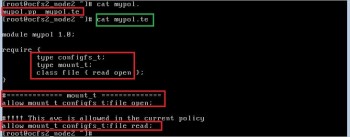

Sorry for the rambling answer but I hope that helps.Guide to the Secure Configuration of Red Hat Enterprise Linux 8

GFS2 TLDR Very performant, resilient, complex setup/maintenance, requires block device for usage You do need to understand cluster architectures and have things like fencing devices. It is as performant as the underlying SAN and the GFS cluster members are typically the data consumers. Common use cases are to back things like Database, Messaging Queues. To run it you need a number of Linux nodes connected to a shared block storage device (SAN usually), you format the filesystem as GFS and it will provide a mechanism for multiple nodes to access the same filesystem without corrupting files (using tools like lock management and pacemaker), you can lose any node and you won't lose access to the data and no service downtime (data lives on the SAN). GFS2 is a clustered filesystem think Veritas Clustered File System or the older Oracle Clustered Filesystem (ocfs). Gluster TLDR Very Flexible, cost-effective but not high performance If you don't configure it right you can lose access to data with a node outage Cons - because its file-based, and because of the distributed nature of the data and metadata lookup, it won't be as fast as a local drive (especially if your talking about nvme ssds) and won't be good for block-based needs (think iscsi/san usage patterns). If you choose you can lose multiple nodes and not lose data/access to data Pros - It's relatively easy to set up, relatively cheap to set up a large amount of redundant storage, and works natively with NFS/CIFS. One of the early users was Pandora Radio. The common use case for this is to provide access to a data set for things like HPC clusters or for static web artifacts. There are intelligent clients (a fuse client) that once connected to the share can determine via file metadata which node has the file/data you are looking for. You can define how much redundancy you have, you can do geo-replication and then you present that storage typically via File-Based access methods (NFS/CIFS).

Gluster is a Software-based Scalable Storage solution - basically, you get a few servers with some disks, then you create what is basically a distributed raid of the data blocks across those servers. So two different technologies that "could" provide similar capabilities but have very different performance profiles and ideal use cases.


 0 kommentar(er)
0 kommentar(er)
